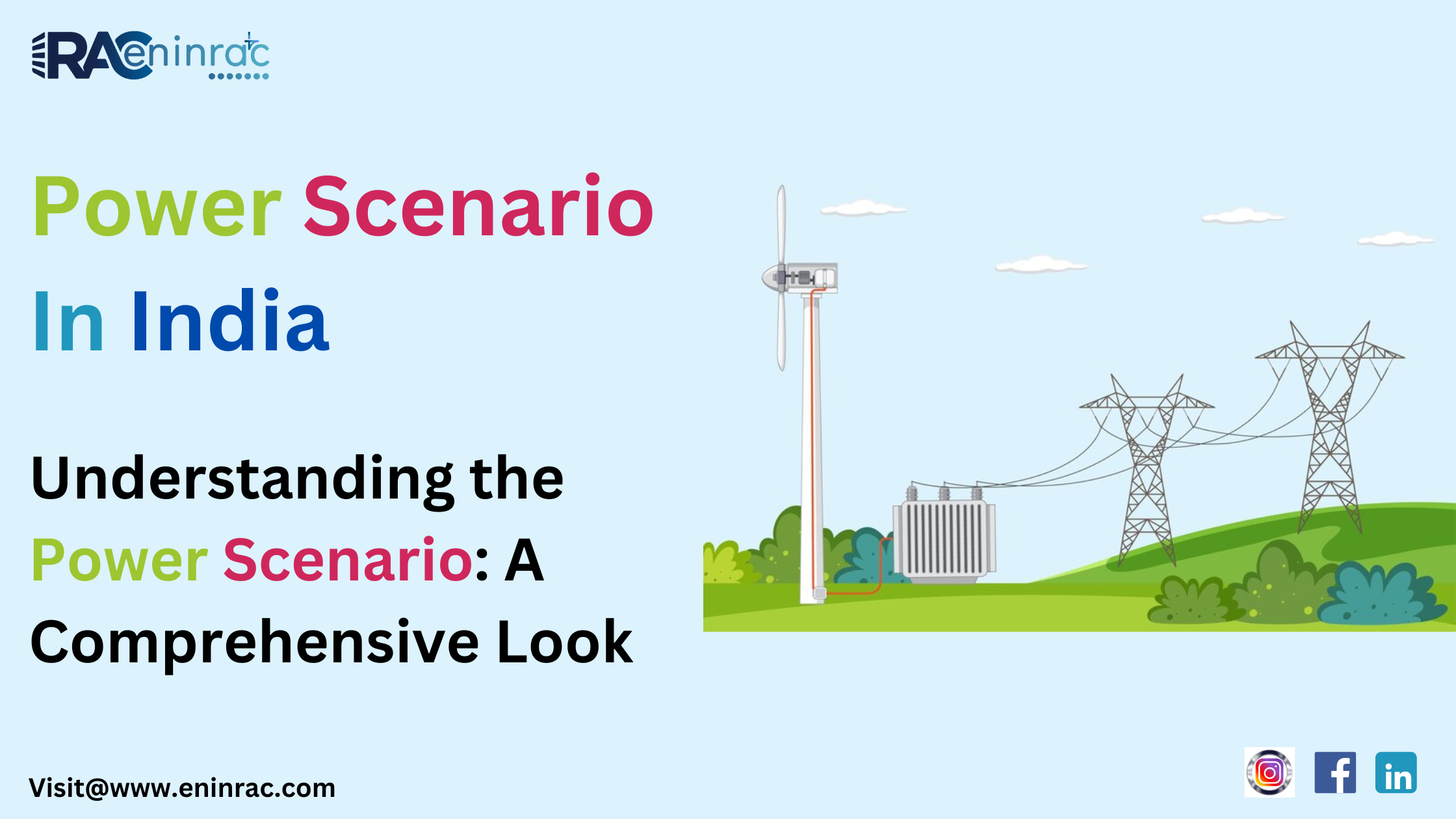The power scenario worldwide is a topic of great interest and importance, reflecting how energy is generated, distributed, and consumed. In particular, the power scenario in India provides a fascinating case study due to its unique challenges and rapid developments. This blog explores the global power landscape, focusing on India’s current status, advancements, and future prospects in the energy sector.
The Global Power Scenario
Current Global Energy Landscape
The global power scenario is marked by a mix of traditional and renewable energy sources. Fossil fuels such as coal, oil, and natural gas still dominate energy production, but there is a significant shift towards renewable sources like solar, wind, and hydropower. This transition is driven by the need to combat climate change, reduce greenhouse gas emissions, and ensure sustainable energy for future generations.
Challenges and Innovations
The primary challenges in the global power scenario include:
- Resource Depletion: Non-renewable resources are finite and depleting rapidly.
- Environmental Impact: Fossil fuel consumption contributes significantly to global warming.
- Energy Access: There are still regions with limited or no access to reliable energy.
Innovations such as smart grids, energy storage solutions, and advancements in renewable energy technologies are critical in addressing these challenges. Countries worldwide are investing in research and development to enhance energy efficiency and sustainability.
Power Scenario in India
Overview of India’s Energy Sector
India, with its vast population and growing economy, has a unique and complex energy landscape. The country relies on a mix of coal, hydro, nuclear, and renewable energy sources to meet its electricity demand. The power sector in India has undergone significant transformations over the past few decades, focusing on increasing capacity, improving reliability, and promoting clean energy.
Current Power Generation and Consumption
Power Generation Mix
India’s power generation is heavily reliant on coal, which accounts for about 70% of the total electricity produced. However, there has been a substantial increase in renewable energy capacity, particularly in solar and wind power. The government’s ambitious targets and policies, such as the National Solar Mission, aim to increase the share of renewables in the energy mix.
Electricity Consumption Patterns
Electricity consumption in India is growing due to urbanization, industrialization, and improved access to electricity in rural areas. The residential sector is the largest consumer of electricity, followed by industries and agriculture. Efforts are being made to enhance energy efficiency and reduce consumption through various programs and initiatives.
Challenges in India’s Power Sector
Infrastructure and Distribution Issues
One of the major challenges in India’s power scenario is the inadequate infrastructure and distribution network. Despite significant improvements, many regions still experience frequent power cuts and load shedding. Upgrading the aging infrastructure and expanding the grid to remote areas are critical for ensuring reliable power supply.
Financial Health of Discoms
Distribution companies (discoms) in India often face financial difficulties due to high transmission and distribution losses, low tariff rates, and poor billing and collection efficiency. Reforms and financial support are essential to improve the financial health of discoms and ensure the sustainability of the power sector.
Dependence on Coal
Although coal is a major source of energy, its environmental impact and the global shift towards cleaner energy necessitate a reduction in coal dependency. Transitioning to renewable energy sources while ensuring energy security is a significant challenge for India.
Initiatives and Future Prospects
Government Policies and Programs
The Indian government has launched several policies and programs to address the challenges in the power sector and promote sustainable energy. Key initiatives include:
National Solar Mission
The National Solar Mission aims to establish India as a global leader in solar energy by increasing the installed solar capacity to 100 GW by 2022. This mission promotes grid-connected solar power projects and rooftop solar installations.
Ujwal DISCOM Assurance Yojana (UDAY)
UDAY aims to improve the financial turnaround of power distribution companies through debt restructuring, operational improvements, and reducing the cost of power.
Pradhan Mantri Sahaj Bijli Har Ghar Yojana (Saubhagya)
Saubhagya aims to provide electricity connections to all households in rural and urban areas, ensuring last-mile connectivity and universal access to electricity.
Renewable Energy Growth
India is making significant strides in renewable energy, particularly in solar and wind power. The country has achieved substantial growth in installed renewable capacity, with ambitious targets to increase the share of renewables in the energy mix. This transition is crucial for reducing carbon emissions and meeting international climate commitments.
Technological Advancements
Technological advancements are playing a vital role in shaping the future of India’s power sector. Innovations such as smart grids, energy storage solutions, and digitalization are enhancing the efficiency, reliability, and sustainability of the power supply. These technologies enable better demand management, integration of renewable energy, and improved grid resilience.
Private Sector Participation
The participation of the private sector is crucial for the growth and development of the power sector in India. Private companies are investing in power generation, distribution, and renewable energy projects, bringing in capital, expertise, and innovation. Public-private partnerships and favorable policies are encouraging greater private sector involvement.
Conclusion
The power scenario in India is a dynamic and evolving landscape, characterized by challenges and opportunities. While the country continues to rely heavily on coal, significant efforts are being made to diversify the energy mix, enhance infrastructure, and promote renewable energy. Government initiatives, technological advancements, and private sector participation are driving the transformation of India’s power sector towards a more sustainable and reliable future. As India navigates its energy transition, it serves as a vital example of how emerging economies can balance development needs with environmental sustainability.





